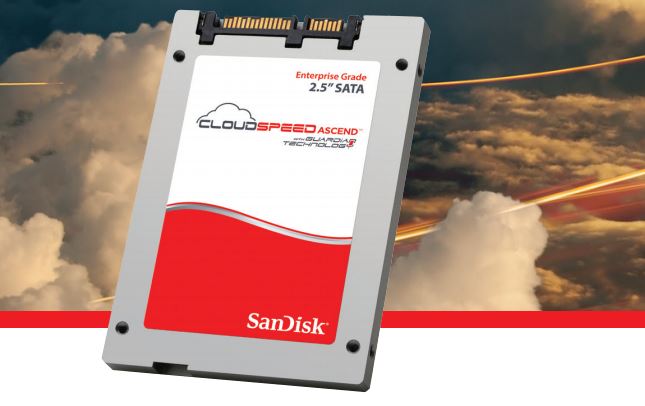We have put a number of SanDisk CloudSpeed drives through our quick benchmarking recently, and today it is time for the SanDisk CloudSpeed Ascend 960GB. The CloudSpeed line is SanDisk’s datacenter optimized SATA SSD product line. We previously benchmarked the SanDisk CloudSpeed Eco 960GB which had solid performance. The CloudSpeed Ascend uses higher quality MLC NAND and is rated at 1 DWPD for 5 years. We are using several other 800GB and 960GB drives from SanDisk, Intel and Samsung in our comparison group to see how the Ascend stacks up.
Test Configuration
Since we are going to assume the use of already released hardware, we are using a legacy system for testing across the test suite:
- Motherboard: Gigabyte GA-7PESH3
- Processors: Dual Intel Xeon E5-2690 (V2)
- SAS Controller: LSI SAS 3008
- RAM: 64GB DDR3L-1600MHz ECC RDIMMs
- OS SSD: Kingston V300 240GB
We are using a SAS controller so one cannot compare results directly to consumer-driven setups where a SATA SSD is connected to an Intel PCH port. There is a latency penalty for going over the PCIe bus to a controller to SAS. It also is a reason NVMe is going to be a game changer in the enterprise storage space.
SanDisk CloudSpeed Ascend 960GB SSD Quick Benchmarks
For our quick tests during this part of the series we will just provide the quick benchmarks with only a bit of commentary. The results should be fairly straightforward and we have added a few results for comparison purposes.
AS SSD Benchmark
AS SSD is a solid benchmark that does not write compressible data to drives. The result is perhaps one of the best workstation SSD benchmarks available today.
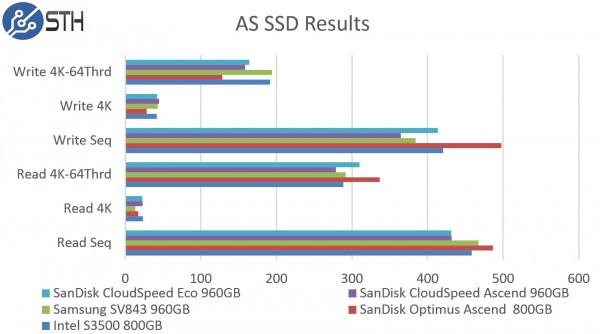
Here the CloudSpeed Ascend performs well. It pulls ahead of the Eco model in the 4K read and write tests but in other tests it is either a performance tie or the Eco pulls ahead.
CrystalDiskMark
CrystalDiskMark is another benchmark which gives non-compressible read/write numbers. This is in contrast to the ATTO Benchmark used by LSI/ Sandforce and its partners when they market a given solid state drive.
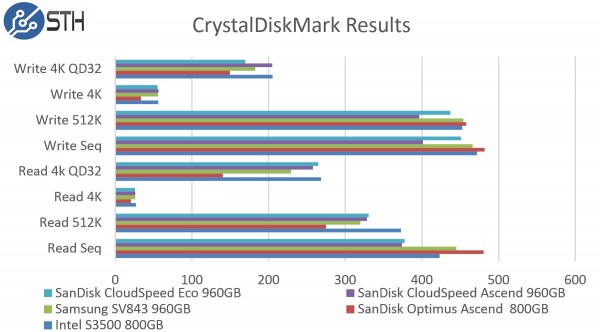
Again, we see solid performance from the SanDisk CoudSpeed Ascend 960GB drive. The sequential reads/ writes are not the drive’s strong suit as we see in CrystalDiskMark and we will see in ATTO.
ATTO Benchmark
The value of the ATTO benchmark is really to show the best-case scenario. ATTO is known to write highly compressible data to drives, which inflates speeds of controllers that compress data like LSI/ SandForce does prior to writing on a given solid state drive.
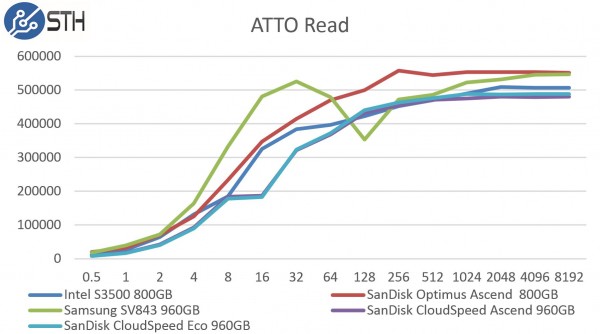
Here we see that the overall pattern of performance is extremely close to what we saw with the CloudSpeed Eco in terms of ATTO read performance. The results are virtually a mirror image.
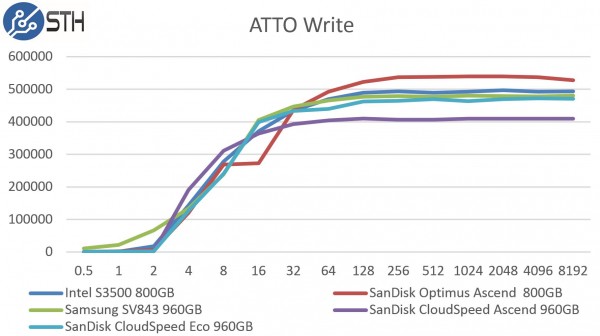
As we saw with our previous tests, the SanDisk CloudSpeed Ascend is not the fastest drive in terms of write performance. It actually performs very well at the 4k and 8k sizes, notching the highest performance numbers of the group, but then tapers off. SanDisk clearly has tuned the drive for a small file transfer size.
Conclusion
As we have seen with the dozens of other datacenter focused SSDs we have tested, the SanDisk CloudSpeed Ascend 960GB is tuned towards smaller ~4k workloads. The overall CloudSpeed line has worked well in the STH colocation and in the lab. The Ascend model’s greater write endurance (1DWPD / 5 years) versus the Eco model’s 1DWPD/ 3 year rating may be reason enough to choose the Ascend when time comes down to it. Like most enterprise hardware, pricing is usually discounted, and usually these drives are sold as parts of larger systems. For our purchases, the Ascend and Eco models have been close to the Intel S3500 800GB, yet at a larger capacity.

